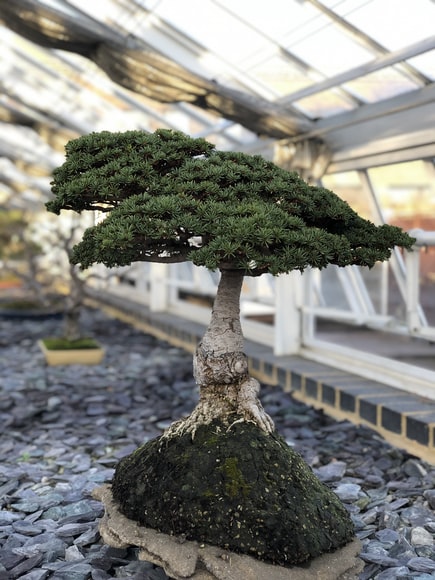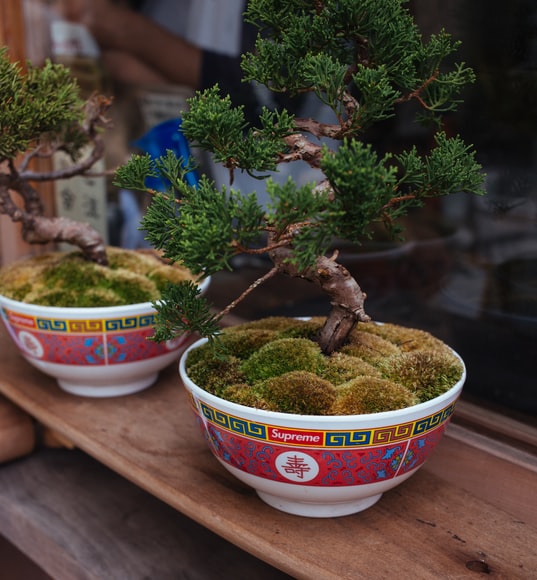Bonsai is a centuries-old art form, with some trees dating back several hundred years. It’s an unusual form of art and a unique pastime. As a hobby or endeavor, it requires commitment and perseverance, but the payoffs are substantial. Only a few standard supplies and tools are needed to complete this project. No “official bonsai tree” is required because there isn’t any such thing. The trees used in Bonsai aren’t specific varieties. It’s the skill of growing and trimming any form of tree or shrub so that it’s as little as possible while still having the proportions and bizarre appearance of its larger competitors.
Bonsai Details
| Category: Art, Beauty, Crafts, Nature | Time: <= 30 min | Skill: Some |
| Initial Cost: $$$ (101-500) | Space: little | People: alone |
| Long-Term Cost: Low | Makes Money: No | Location: indoor, outdoor |
History of Bonsai
This ancient Chinese art was performed exclusively by the wealthy and aristocratic classes, who used native-collected trees as costly presents dispersed across China. The technique of growing trees in containers was brought to Japan during the Kamakura era, which was a time when Japan acquired many of China’s cultural hallmarks. Because of the Zen Buddhist influence and the fact that Japan is just 4% the size of mainland China, the Japanese developed Bonsai in a specific direction. As a result, the types of landscapes that could be created were much fewer. Many popular styles, methods, and tools originated in China and were further developed in Japan. Although Bonsai has been recognized outside of Asia for three centuries, it has only lately been widely adopted outside its original country.
What is Bonsai?
It is an art form that involves cultivating trees or plants so that their growth is restricted. In general, they do not grow much higher than 1-2 feet. Trimming and pruning the tree into intriguing shapes is also an art and a system in and of itself. From erect to windswept, these forms come in many shapes and sizes. It is possible to grow a few more bonsai trees in one pot, which results in an array of unique shapes and layouts.
One thing to remember is that Bonsai does not refer to a particular species of tree. Handling and caring for a tree are a skill that can be honed with experience, and a variety of tree species are suited.
How to get started with Bonsai
To begin, consider the bonsai tree. Start with a starting plant if you’re new to Bonsai. It’s far simpler and safer than attempting to build your own from nursery stock plants. From the bonsai tree to the pruning tools, starter packages often include everything you need. A 7-year-old bonsai tree, container, pruning tools, fertilizer, and instructions were all part of the package I purchased to get started. If you want to try Bonsai for the first time, I strongly suggest buying a beginner kit. This way, you have very little to lose.
Cost of Bonsai as a Hobby
A bonsai tree will cost you on average about $100. There is no additional charge for trimming wire, soil, or fertilizer. The bonsai tree is included in the purchase. It would help to take note that these are averages, and your results may differ depending on the quality of the bonsai tree you choose.
Material in Bonsai
Collect all of the materials you’ll need to make a bonsai. All of the resources you’ll need must be within easy reach. It’s also critical to work with high-quality equipment and supplies.
- Bonsai Plant – Bonsai trees and plants may be found at most bonsai nurseries, as well as on the internet. Bonsai trees may be created from various species, but the key is to understand how trees develop and care for them.
- Bonsai Pot – To cultivate a bonsai, you’ll need the appropriate container. It is possible to find traditional pots in various shapes and sizes. It has to be well-drained so that excess water and fertilizer can be removed without damaging the roots.
- Bonsai potting soil – Garden shops and bonsai nurseries provide potting soil ideal for bonsai growth, and you can get it online or from a local store. The soil used for pots is often rich in nutrients and has high water absorption rates.
- Aggregates – Using aggregate materials can help your soil’s drainage and aeration. The bottom of the pot is filled with tiny pebbles and other things.
- Water – When watering your bonsai plants, make sure it’s clean and safe. It’s okay to use rainfall or tap water, as long as it is safe for your bonsai plants.
- Balanced Fertilizer – To help your bonsai recover, feed it a diet rich in balanced fertilizer. Some trees, on the other hand, need a unique mixture of fertilizer. This kind of fertilizer is available at bonsai nurseries, garden supply stores, and home improvement stores.
- Pruning Shears – You can prune and trim your Bonsai with pruning shears, depending on the look you’re going for. Even though there are many pruning shears, using clean or sterilized shears can help prevent disease and mildew from spreading throughout the plant.
- Wire – The wire is essential for training your Bonsai in the desired manner. Although there are many other types of wiring available, aluminum and annealed copper are the most popular. Bonsai with young branches should use aluminum wires, while older, larger units and trunks should use robust annealed copper.
- Pliers – After training, you’ll need a decent set of pliers to cut the wire and remove it. Also, a good set of pliers is required to cut complex roots, branches, and trunks, particularly on older trees.
Benefits of Bonsai Tree
Purify air – Plants have long been recognized to decrease pollutants in indoor air and cleanse the air.
Lower stress – When people actively interact with indoor plants, their blood pressure and stress levels drop.
General well-being – Being among plants has reduced stress, increased productivity, and improved mood.
Maintain Humidity – According to one research, keeping plants inside has been linked to more minor colds, coughing, and dry skin. Bonsai could be influenced by the fact that plants may raise the relative humidity of a room.
Conclusion
It is feasible to grow Bonsai from common trees if you have the necessary knowledge and equipment. Bonsai trees may take a long time to develop and shape; therefore, patience is required while caring for them. For beginners, bonsai growth techniques like pruning, shape, feeding, and watering must be learned from the ground up. All of these tips will help you in providing the best possible care for your Bonsai.


